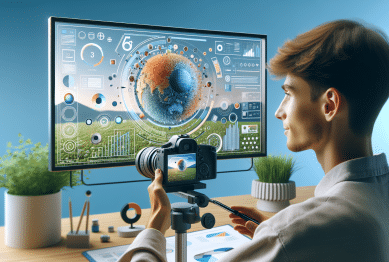In 2025, the interplay between technology and social behavior has become a central focus of societal discourse. One of the most pressing concerns is AI-driven social isolation. Research suggests that advancements in artificial intelligence, particularly in urban planning, social media algorithms, and public space design, are inadvertently contributing to a decline in face-to-face social interactions.
This phenomenon is reshaping how individuals engage with their communities, perceive public spaces, and form social bonds. While AI offers convenience and connectivity, it is also altering the patterns of human behavior in subtle but profound ways, affecting everything from workplace dynamics to community engagement and urban life.

The Acceleration of Social Isolation in Urban Environments
AI’s Role in Urban Design
Modern urban environments increasingly rely on AI to optimize traffic flow, public transport, and city planning. While these technologies improve efficiency, they can unintentionally reduce opportunities for spontaneous social interaction.
Recent studies examining cities such as New York, Boston, and Philadelphia revealed notable behavioral shifts in public spaces. When comparing footage from the 1970s to today, researchers observed:
- A 15% increase in average walking speed, reducing the chance of casual encounters.
- Fewer individuals lingering in public areas like parks, plazas, and sidewalks.
- A noticeable decline in face-to-face social interactions, replaced by solitary engagement with smartphones or other devices.
These changes reflect a larger trend in urban living: while cities may be physically populated, the quality and frequency of social interactions are decreasing.
The Impact on Public Spaces
Urban design historically emphasized communal spaces, such as town squares, markets, and parks, to encourage social interaction and community cohesion. Today, AI-driven planning often prioritizes efficiency and safety over social engagement. Seating arrangements, pedestrian flow, and public transport stops are optimized for movement rather than interaction, unintentionally creating environments that discourage lingering and spontaneous conversation.
Consequently, public spaces are increasingly functional rather than social. Even in densely populated areas, the human connection—the social glue that holds communities together—faces erosion.
The Paradox of Technology: Facilitator and Barrier
Technology as a Double-Edged Sword
While digital technologies offer global connectivity, they can reduce local, face-to-face engagement. Social media platforms, messaging apps, and AI-driven recommendation systems facilitate communication but often replace in-person interaction. This creates a paradox: people are more connected digitally than ever, yet real-world connections are diminishing.
AI’s Role in Social Behavior
AI is designed to maximize user engagement by curating content based on preferences, habits, and past behavior. This personalization fosters convenience but can inadvertently isolate individuals:
- Algorithms create echo chambers, limiting exposure to diverse viewpoints.
- Personalized recommendations encourage consumption of content rather than participation in communities.
- The emphasis on digital engagement reduces motivation for physical social interaction.
These dynamics contribute to the rise of AI-driven social isolation, which affects not only urban dwellers but also workplace interactions and personal relationships.
The Psychological and Social Implications
Mental Health Considerations
Social isolation is strongly linked to mental health challenges, including depression, anxiety, and cognitive decline. According to the National Institute on Aging, chronic social isolation can increase the risk of cognitive impairment by 40% in older adults. Young adults and teens, heavily reliant on digital communication, are not immune: increased screen time correlates with higher levels of stress and reduced emotional resilience.
Erosion of Social Capital
Social capital—the network of relationships that fosters trust, cooperation, and shared norms—is eroding in communities affected by AI-driven isolation. As individuals interact less frequently in person, informal support systems weaken, reducing the sense of collective identity and community cohesion. This erosion can have broader societal consequences, including diminished civic participation and weakened communal safety nets.
Reimagining Public Spaces: AI as a Tool for Social Reconnection
Designing for Interaction
Urban planners are exploring how AI can be used to promote social interaction rather than diminish it. By analyzing pedestrian movement, usage patterns, and human behavior, AI can inform:
- Optimal placement of benches, shade structures, and communal areas.
- Public art and interactive installations that invite participation.
- Event programming, such as pop-up markets or community workshops, tailored to local usage patterns.
Such strategies can transform public spaces into social hubs that encourage engagement, lingering, and shared experiences.
Ethical Considerations in AI Implementation
Using AI to influence social behavior raises ethical questions:
- How is personal data collected, stored, and used?
- Are interventions genuinely intended to promote community well-being or primarily commercial gain?
- How can transparency and public trust be maintained in AI applications?
Addressing these questions is critical to ensuring AI supports healthy social dynamics rather than undermining them.
Societal Implications: The Broader Impact of AI on Social Dynamics
Workplace Transformation
AI is also reshaping workplace social dynamics. Remote collaboration tools, predictive scheduling, and automated communication systems can improve efficiency but reduce spontaneous interactions. Water-cooler conversations, informal mentoring, and serendipitous collaboration—important for creativity and innovation—are declining. Companies now face the challenge of balancing AI-driven efficiency with the human need for social connection.
Educational Environments
In schools and universities, AI-driven learning platforms personalize education, adapting content to each student’s pace. While effective academically, these systems may inadvertently reduce peer-to-peer interaction, collaboration, and social learning. Educators are tasked with designing hybrid approaches that combine the benefits of AI personalization with opportunities for meaningful social engagement.
Strategies for Mitigating AI-Driven Social Isolation
Promoting Digital Literacy
Awareness is the first step. Individuals should understand how AI influences behavior and social interaction. Digital literacy programs can teach:
- How algorithms affect social feeds, recommendations, and exposure to diverse perspectives.
- Strategies for intentional technology use, including balancing screen time with offline social activities.
- Recognizing signs of digital fatigue and social isolation early.
Encouraging Community Engagement
Communities can implement programs and events to foster in-person social interaction:
- Pop-up events, local markets, and cultural festivals.
- Community-driven volunteer programs and civic initiatives.
- Designated social spaces in urban areas for casual gatherings, collaborative projects, and arts engagement.
Ethical AI Practices
Developing AI with social well-being in mind is essential. Ethical guidelines should emphasize:
- Transparency in AI usage.
- Prioritization of human-centered outcomes.
- Maintaining privacy while using AI to optimize public spaces for social interaction.
By following these principles, AI can enhance, rather than inhibit, human connection.
Emerging Trends: Future Directions in Social Dynamics
- AI-Enhanced Community Planning – Cities will increasingly use AI to identify social patterns and optimize public spaces for engagement.
- Mixed Reality Experiences – Augmented and virtual reality tools may create hybrid social environments, blending physical and digital interaction.
- AI-Powered Social Analytics – Organizations may leverage anonymized data to measure and improve social capital in communities.
- Wellness-Oriented Urban Design – Public spaces may be designed with mental health as a priority, using AI to reduce stress and promote social cohesion.
These trends suggest that AI, while contributing to social isolation today, could become a tool for strengthening community ties if applied thoughtfully.
Conclusion: Navigating the Future of Social Dynamics
As we move deeper into 2025, AI-driven social isolation continues to be a pressing concern across urban environments, workplaces, and educational settings. While technology offers efficiency, personalization, and global connectivity, it also presents challenges to human interaction, community engagement, and social capital.
By understanding these dynamics and implementing strategies such as digital literacy, ethical AI use, and community-focused urban design, society can create a balance where technology enhances social life rather than diminishes it. The future of social dynamics depends on the choices we make today, ensuring AI serves as a bridge for human connection rather than a barrier.
References
- The Guardian. (2025, August 18). AI makes people walk more quickly and socialize less in public spaces. Available at: https://www.theguardian.com (Accessed: 18 August 2025).
- Ogilvy. (2025). Social trends 2025: Social-first brand building and key shifts. Available at: https://www.ogilvy.com (Accessed: 18 August 2025).
- Fang, C. M., Liu, A. R., Danry, V., Lee, E., Chan, S. W. T., Pataranutaporn, P., Maes, P., Phang, J., Lampe, M., Ahmad, L., & Agarwal, S. (2025). How AI and Human Behaviors Shape Psychosocial Effects of Chatbot Use: A Longitudinal Controlled Study. Available at: https://www.media.mit.edu (Accessed: 18 August 2025).









